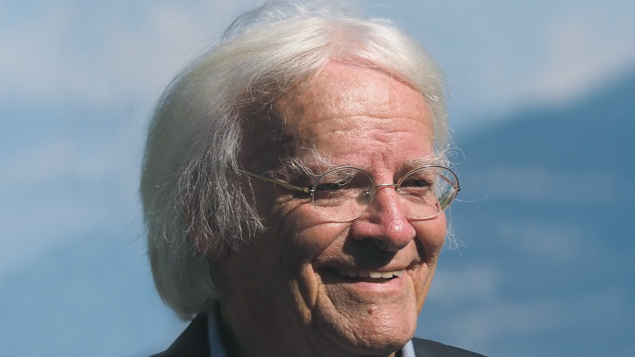
Hans Joachim Specht, one of the founders of ultra-relativistic heavy-ion physics and a pioneering figure in hadron cancer therapy, passed away on 20 May 2024 at the age of 87. A graduate of the University of Munich and ETH Zurich, and full professor at the University of Heidelberg for more than 30 years, his career was distinguished by important contributions across a spectrum of scientific domains.
Hans started his academic career in atomic and nuclear physics in Munich, under the guidance of Heinz Maier-Leibnitz. A highlight was the discovery and precise measurement of shape isomerism in heavy nuclei. His observation of distinct rotational bands in plutonium-240 showed, for the first time, that nuclei can be in a strongly deformed cigar-shaped state shortly before fission, confirming the concept of a “double-humped” fission barrier. In Munich, and later in Heidelberg, he developed several innovative large-scale detectors for fission fragments and reaction products of heavy-ion collisions, becoming one of the leading experimentalists in the new field of heavy-ion physics, with experiments at the MPI for Nuclear Physics in Heidelberg and at the newly founded GSI in Darmstadt.
In the early 1980s, Hans reoriented his research towards the higher energies available at CERN. His contributions and advocacy, alongside a handful of other enthusiastic proponents, were instrumental in establishing CERN’s ultra-relativistic heavy-ion programme at the SPS, which was approved in 1984. He became the spokesperson of a first-generation heavy-ion experiment (Helios/NA34-2), initiator and spokesperson of a second-generation experiment (CERES/NA45), and a crucial supporter of the third-generation ALICE experiment at the LHC.
Hans was a brilliant experimentalist with a keen eye for cutting-edge detector concepts and how to apply them in a minimalistic approach. This was apparent in his masterpiece, the dilepton experiment CERES, which used a “hadron blind” double Cherenkov detector and a specially crafted magnetic field configuration to pick out and measure the rare electrons from the haystack of hadrons.
Initially with CERES, and later as a leading force within NA60, Hans succeeded in detecting, for the first time, thermally produced lepton pairs in heavy-ion collisions; the original discovery with NA45 remains one of the most cited papers from the SPS heavy-ion programme. The high-precision measurements at NA60 of what is arguably one of the most challenging signals (the Planck-like spectrum of thermal radiation at higher masses), and the precise characterisation of the in-medium modification of the ρ meson at lower masses, proved to be crucial in establishing the existence and properties of quark–gluon plasma. The enduring quality and relevance of these measurements remain unsurpassed almost two decades later.
Throughout his career, Hans held numerous positions in the realm of science policy at a variety of German and international research institutes. At CERN, he served as chair of the PSCC committee and as a member of the SPC. He was also a founding member of the first board of directors of the theory institute ECT* in Trento, a place that held special significance for him.
Hans was a brilliant experimentalist with a keen eye for cutting-edge detector concepts
As scientific director of GSI from 1992 to 1999, Hans set the course for the development and application of a groundbreaking innovation in radiation medicine: ion-beam cancer therapy. A pilot project at GSI for the irradiation of tumours with carbon-12 ions successfully treated 450 patients and led to the establishment of the Heidelberg Ion-Beam Therapy Center, the first European ion-beam therapy facility. Reflecting on his achievements, he was most proud of his contributions to ion-beam therapy. Additionally, Hans initiated discussions on the long-term future of GSI, which eventually led to the proposal for the international FAIR facility.
Hans also had a profound interest in the intersection of physics, music and neuroscience, collaborating with Hans-Günter Dosch on understanding perception of music and its physiological bases. This transdisciplinary approach produced highly cited publications on the differences in the auditory cortex between musicians and non-musicians, expanding the boundaries of how we understand the brain and its response to music.
Hans was an outstanding teacher, a prolific mentor, a successful science manager, but foremost, he was someone who profoundly loved physics, with a relentless drive to follow wherever his interests and research would lead him. His frequent and spirited commutes between Heidelberg and CERN in his iconic green Lotus Elan will be fondly remembered. His critical guidance and profound questions will be deeply missed by all who had the privilege of knowing him.







